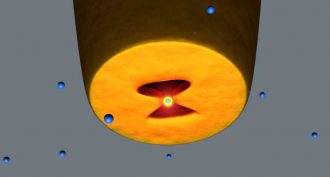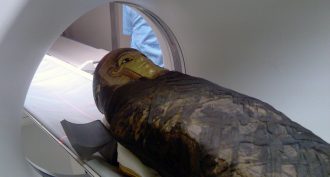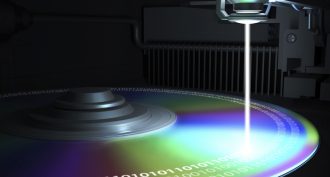Waves and Their Applications in Technologies for Information Transfer

Educators and Parents, Sign Up for The Cheat Sheet
Weekly updates to help you use Science News Explores in the learning environment
Thank you for signing up!
There was a problem signing you up.
-
 Space
SpaceWaves from the birth of time
Inflation is the idea that in the split-second after the Big Bang, the universe exploded into huge-ness. Although the hypothesis is 30 years old, evidence to confirm it had been lacking. Until now.
-
 Physics
PhysicsLaser tweezers grab nano bits
An optical fiber, a bit of gold and a laser make up a new type of tweezers. Scientists may soon use it to pick up and move around individual viruses or proteins.
-
 Animals
AnimalsExplainer: Tagging through history
What started as little metal bands have evolved into high-tech devices — some of which rely on satellites to share their findings.
By Susan Moran -
 Humans
HumansMummies share their secrets
Cutting-edge technology such as CT, or CAT, scans and endoscopes are allowing scientists to see not just what’s underneath the wrappings but also what’s inside a mummy’s body.
-

-
 Earth
EarthTsunami’s trek traced in the sky
Scientists photograph atmospheric ripples that followed the March tsunami across the Pacific.
-
 Tech
TechLasers of a feather
A nifty light trick in bird feathers inspires researchers to create a new kind of laser.
-

Kids’ ingenuity honored at Intel ISEF
Young scientists receive awards in international competition.
-
 Tech
TechCell phones on the brain
When an active cell phone is pressed against the ear, the brain gets busier.
-
 Environment
EnvironmentUnderwater racket
The oceans are getting louder, and scientists want to know what that means for marine residents.
By Emily Sohn -
 Physics
PhysicsExplainer: What is a laser?
Lasers are the brightest source of light on Earth and produce the purest form of color possible.
-
 Physics
PhysicsExplainer: How a synchrotron works
Giant magnets direct superfast light into beams up to 30 million times as bright as those produced by a laser pointer.
By Emily Sohn